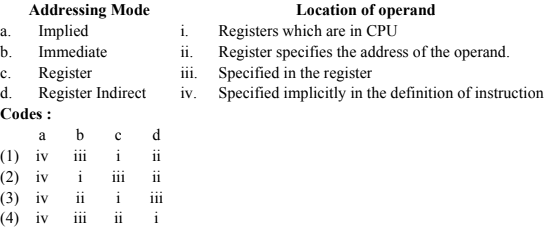UGC NET CS 2017 Jan - III
Question 1
Which of the following is an interrupt according to temporal relationship with system clock ?
Question 2
Given the following two statements :
A. L = {w|na(w) = nb(w)} is deterministic context free language, but not linear.
B. L = {an bn} ∪ {an b2n} is linear, but not deterministic context free language.
Which of the following options is correct ?
Question 4
The general configuration of the micro-programmed control unit is given below:
 What are blocks B and C in the diagram respectively?
What are blocks B and C in the diagram respectively?
 What are blocks B and C in the diagram respectively?
What are blocks B and C in the diagram respectively?Question 7
In 8085, which of the following performs : load register pair immediate operation?
Question 8
Consider following schedules involving two transactions:
S1 : r1(X); r1(Y); r2(X); r2(Y); w2(Y); w1(X)
S2 : r1(X); r2(X); r2(Y); w2(Y); r1(Y); w1(X)
Which of the following statement is true?
Question 10
Let pk(R) denotes primary key of relation R. A many-to-one relationship that exists between two relations R1 and R2 can be expressed as follows :
There are 76 questions to complete.
Last Updated :
Take a part in the ongoing discussion
